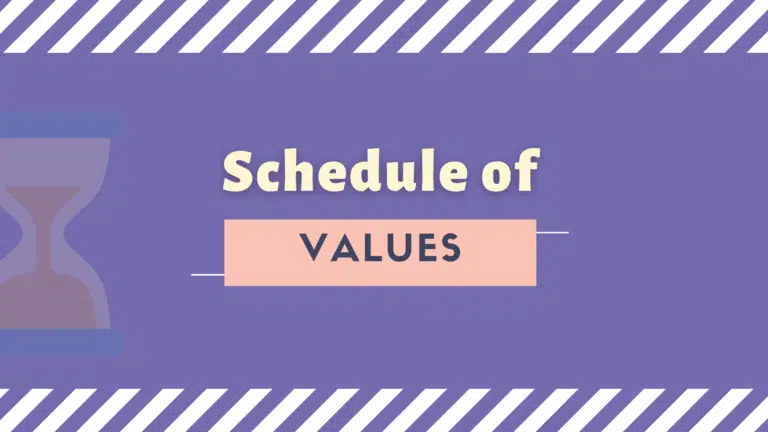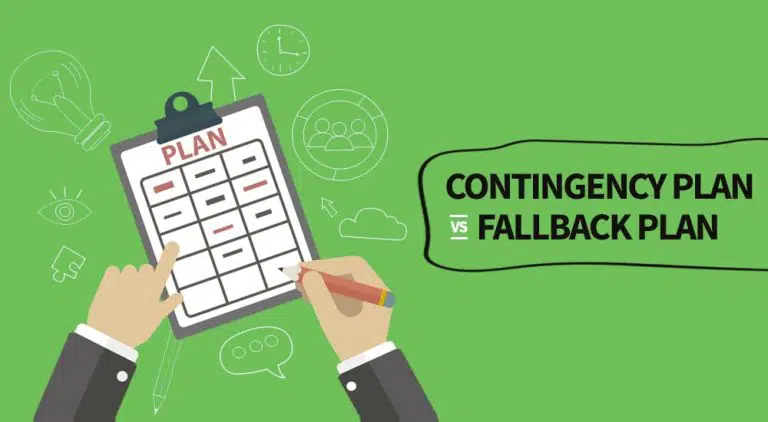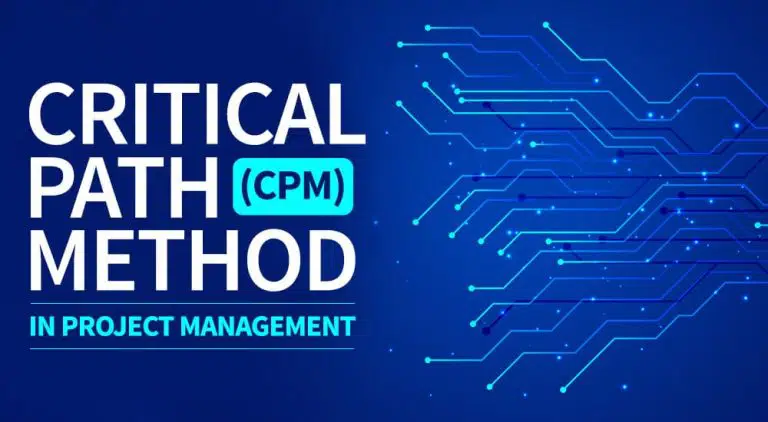The success of a project depends on the project plan. Without a project plan, project managers cannot measure the project’s progress, team members will be in the dark, and the project will be unsuccessful.
Today’s blog post will provide a few project plan examples and samples to help you develop your project plan.
However, before that, let’s understand the project plan.
A project plan is a collection of project documents and subsidiary plans that comprise the project. These plans help the project team to execute the tasks and complete the project on schedule and without exceeding the budget.
A few common sub-plans and components are as follows:
#1: Purpose of the Project: This section has the project charter and explains the project’s purpose. It can include elements of the feasibility study and cost-benefit analysis.
#2: Executive Summary of the Project: This section provides a high-level project summary; it can have a high-level overview of all subsidiary plans and explains the following:
- Work Breakdown Structure: This work breakdown structure includes the project work broken down into work packages.
- Deployment Plan: This plan ensures that the system reaches to intended users and benefits are realized.
- Change Control Management: This ensures every change request is reviewed, processed, and integrated into the project baselines after approval.
#3: Schedule Management: Here, you establish a schedule management plan and schedule baseline. A schedule baseline helps measure the project’s progress and allows project managers to determine whether the project is on schedule.
The subsections under schedule management include:
- Milestones: Contains key project milestones and their expected achieving dates.
- Project Schedule: It shows the schedule of the project. You can base the project schedule on a Gantt chart, Milestone, CPM, or PERT.
- Dependencies: This section describes the key project management dependencies.
#4: Cost and Budget Management: A cost baseline helps measure the project’s progress in terms of cost; you can see if the project is under or over budget.
#5: Quality Management: This section helps you measure the quality of the project and ensure the project’s final product conforms to the specifications and is free of errors.
#6: Resource Management: This section covers the resource requirement, acquiring, developing, and managing these resources.
#7: Communication Management: This section collects the communication requirements of stakeholders, develops communication plans, and then engages stakeholders throughout the project life cycle.
#8: Risk Management: This section discusses risk management. Establish a risk management plan, risk definition, identify risks, develop a risk response plan, and then monitor and mitigate those risks until the project is complete.
#9: Issue Management: This section manages project issues. It includes an issue log that documents incidents occurring throughout the project lifecycle.
#10: Procurement Management: This section covers procurement activities. Purchasing equipment, hiring team members, assigning jobs to subcontractors, etc.
#11: Compliance-related Planning: This section discusses the policies businesses must comply with. For the project team to succeed, they must adhere to the regulations. In addition, the government bodies vested in the project are project stakeholders, and you must manage them closely.
Now we will see the examples of project plans and samples.
Project Plan Examples and Samples
Now, we will review eleven examples of project plans and samples.
#1. Simple Cross-Functional Project Plan
Managing complex projects can be easy by using a straightforward cross-functional project schedule. It improves the success rate and decreases the likelihood of expensive execution faults. You can manage the project using a single integrated and specialized functional plan at the highest level.
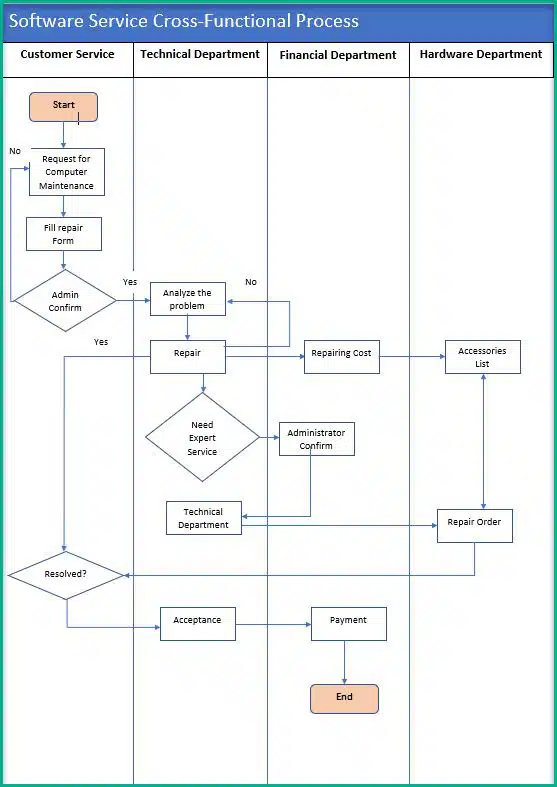
#2. Product Marketing Sample: Plan the Next Launch
Before introducing a product, businesses conduct market research to test the waters to decide on market tactics.
The strategy focuses on persuading the target audience to try the product. Ensure you have a plan before moving ahead to sell a product.
Here is a sample of a marketing strategy to help plan a new launch:
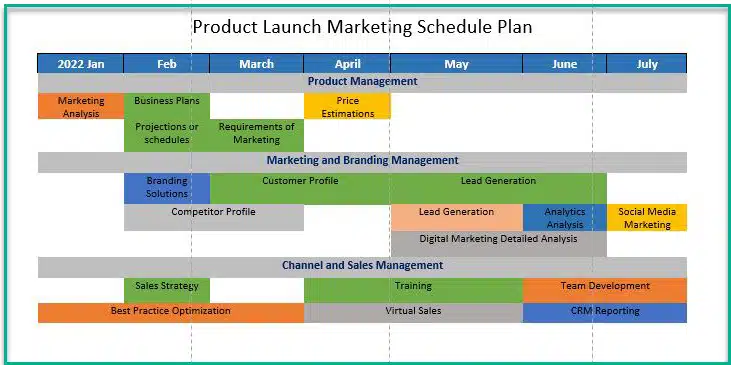
#3. Content Calendar Plan Sample: Hit Publishing Deadlines
Product managers constantly seek new ideas to give them a competitive advantage. They promote products across many platforms, including social media. Timing is the key to attracting the right audience on social media.
To plan posts successfully, product managers rely on content calendar templates to plan content, keep up with trends, and be ready for any changes.
Product managers can better plan and organize upcoming content with the help of a content calendar. They can track the content’s progression, identify gaps, and evaluate how well they are meeting the goals.
A content calendar can include upcoming articles, status updates, planned promotions and partnerships, and planned content revisions.
You can use Google Sheets, Excel, and other project management tools to organize and publish content.
You can use the following content calendar sample:
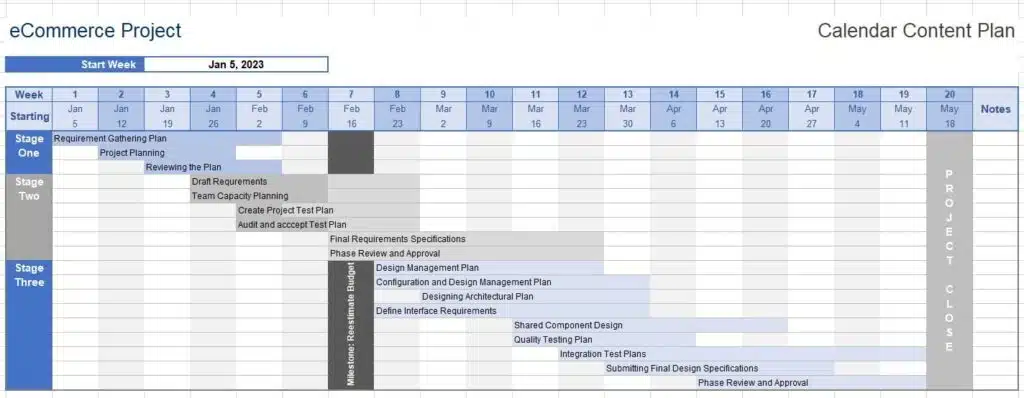
#4. Marketing Campaign Sample Template: Map out The Plan
A marketing campaign can drastically affect the digital marketing approach. Consider it a digital road map to the desired outcome, such as increased sales, brand recognition, or lead generation. You can use it to identify precise marketing goals, forecast future trends, get funding, and improve procedures.
Below is an example of marketing campaign planning:
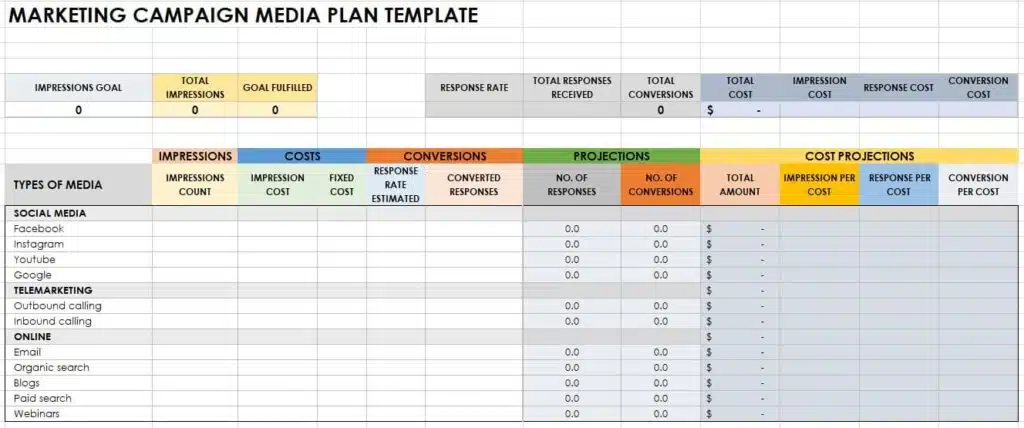
#5. Agency Management Sample: Nail the Next Collaboration
When working with agencies, you must consider deliverables, finances, proposal writing, and planning, among other things. You can avoid following up on lengthy email exchanges to keep up with the latest updates and ideas if you use agency management planning.
It offers a comprehensive summary of everything the agency is working on, facilitating easy collaboration on projects and contact with internal and external stakeholders.
You can synchronize time and establish priorities. To assist the agency in comprehending what you expect of them, develop priority levels and dates for the required completed outputs.
It keeps everyone updated on the agency’s activities and problems by giving regular status reports, which you can use to share progress.
It streamlines approvals. Tracking and moving agency work through approval phases makes it possible to launch campaigns quickly and ensure nothing becomes dispatched without approval.
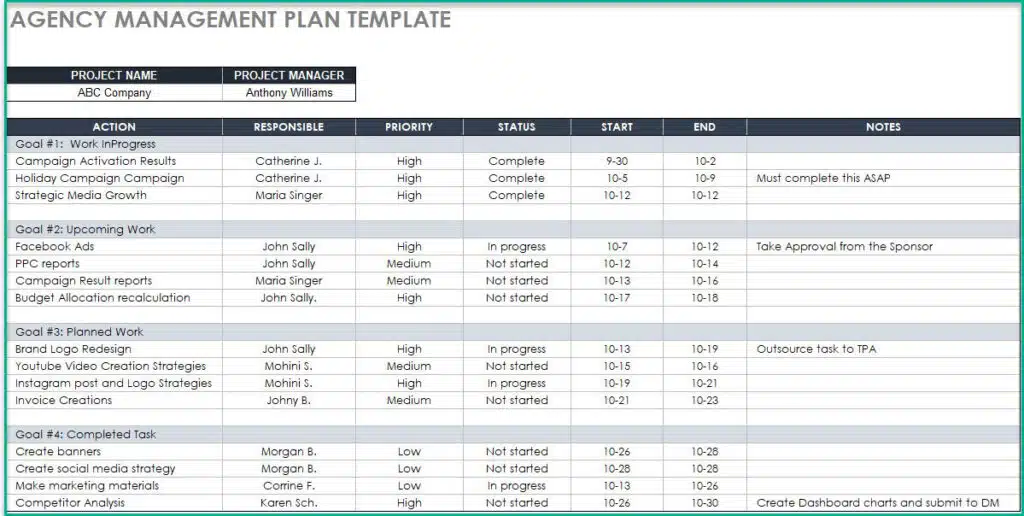
#6. User Research Template: Organize Uxr Projects
Getting consumers’ attention is valuable. Before researching users, it is imperative to have clear goals, expectations, and questions available to discuss with anyone who inquires.
A user research plan conveys crucial user details. These documents, with protocol and research roadmap, ensure everyone is on the same page and is aware of their responsibilities.
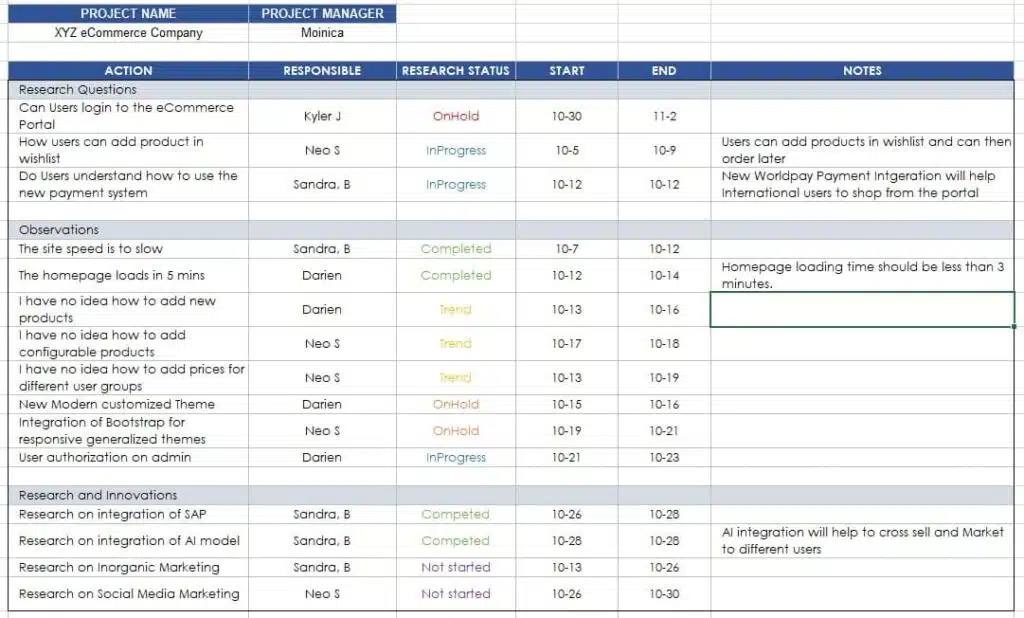
#7. Sprint Planning Template: Manage Agile Teams
Sprint planning helps agile teams prioritize their workload and identify which members can best handle particular tasks. It is difficult to assign work at the right time without a plan.
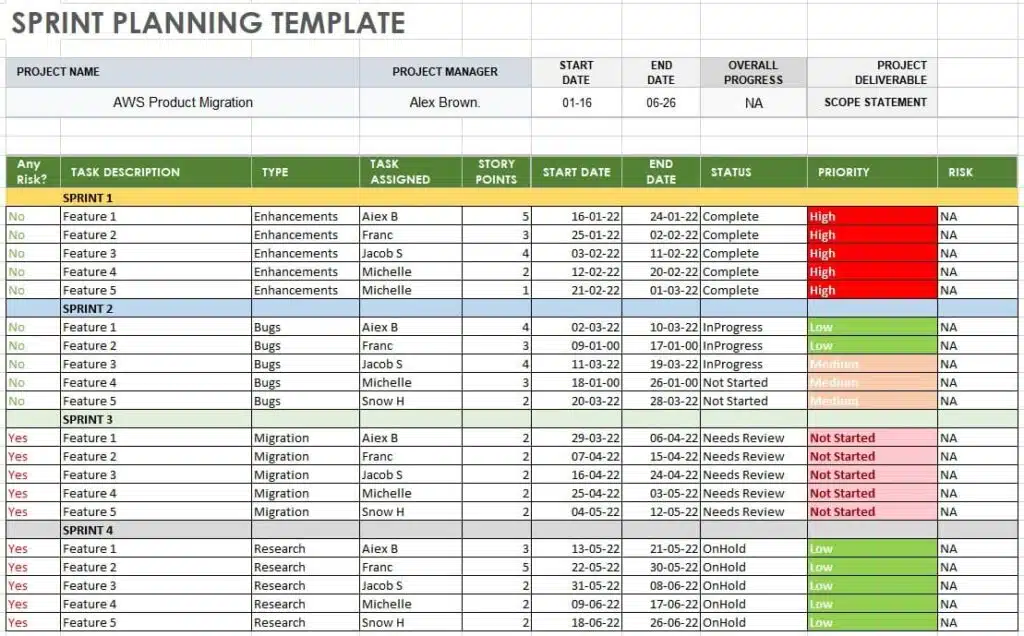
#8. Board Meeting Agenda Template: Take Meeting Minutes
The board of directors consists of influential stakeholders who also have a lot of other responsibilities. They can make better use of their time thanks to the meeting agenda.
The structure of a board meeting agenda can include the following:
- Heading: This section should have the meeting’s time, place, and date.
- Call To Order.
- Changes to Agenda.
- Approval of Minutes.
- Reports.
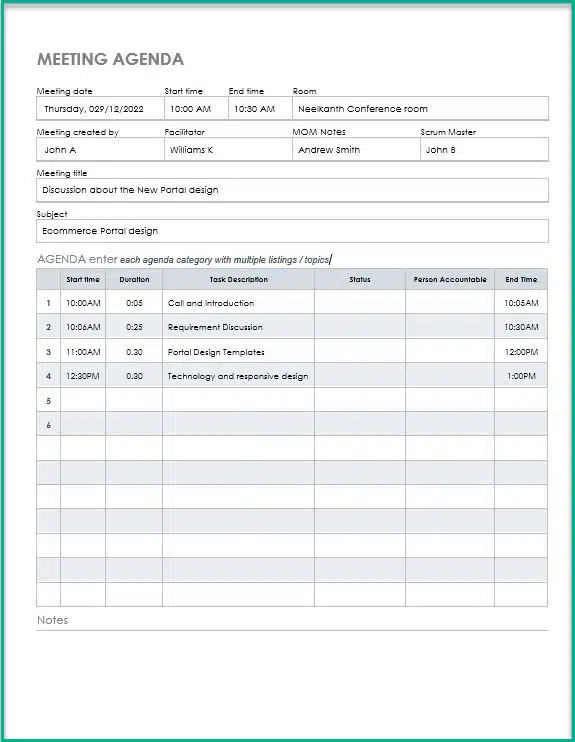
#9. Work Requests Template: Simplify the Intake Process
Work requests can come in at any time and can distract team members. Priorities can misplace if you don’t have a mechanism to handle these requests, which can distract team members. To avoid this, you can use work request templates to manage work requests and boost the team’s productivity.
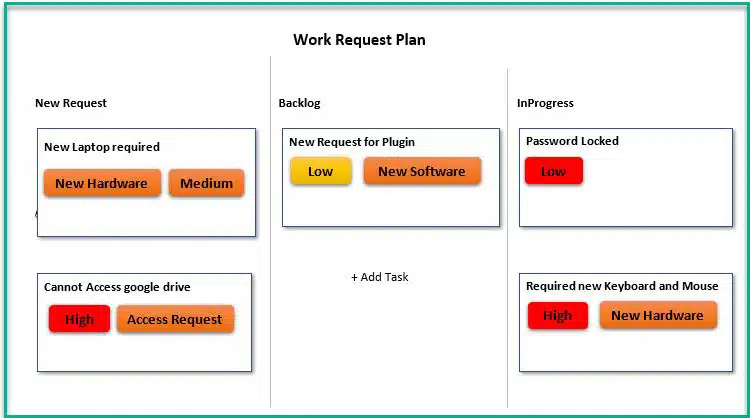
#10. Sales Plan Sample Template: Set Strong Goals
Sales managers depend on a sales plan. This plan has the sales goals and establishes the plans and strategies. It helps estimate the budget, identify the sale market prospects, plan staff requirements, and obtain a timeline for achieving the goal.
Developing a sales plan costs effort, time, and money. However, you can avoid these expenses by using templates for efficiency and organization and investing in other areas to make the sales plan successful.
Below is an example of a sales plan:
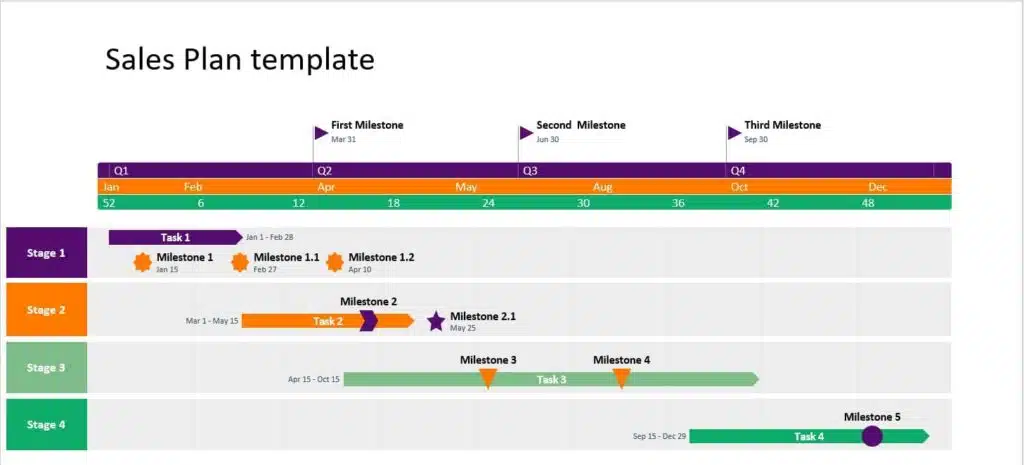
#11. New Employee Onboarding: Standardize Onboarding
New employee onboarding involves getting a new employee and helping with their onboarding.
The following questions can help onboard new employees:
- When will the process begin?
- How long would it last?
- What are the cultures and work environments the new employees need to know?
- What are the goals for new employees?
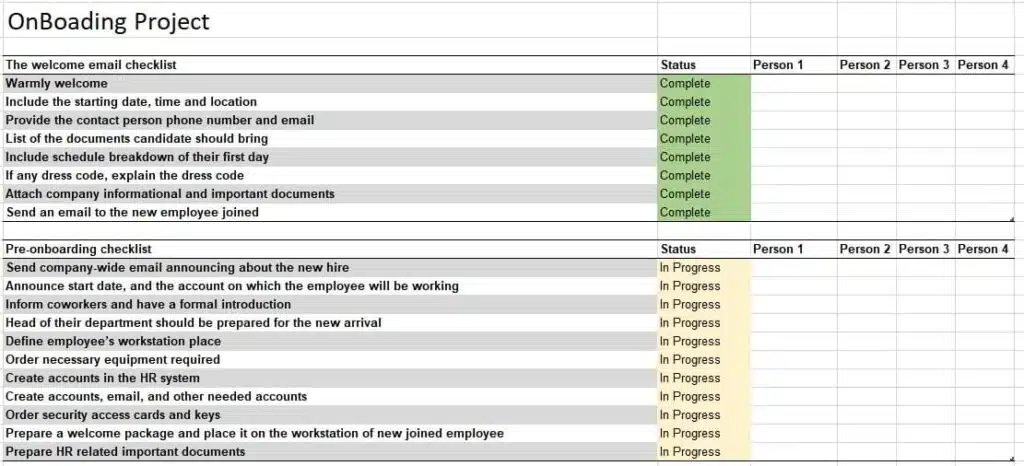
Conclusion
The success of a project can be organized and shaped with the use of project planning assistance.
You can construct a strategy for your next effort with the project plan examples and samples provided in this post.

I am Mohammad Fahad Usmani, B.E. PMP, PMI-RMP. I have been blogging on project management topics since 2011. To date, thousands of professionals have passed the PMP exam using my resources.



